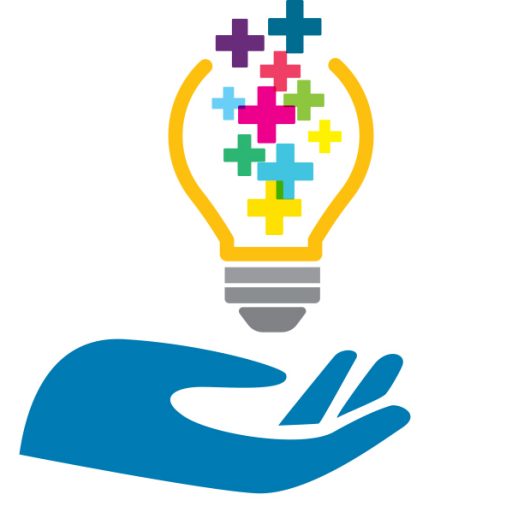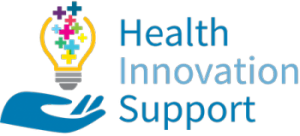Every Successful Innovation Has a Common Pathway
Health Innovation Support has the professional skills and experience to guide you every step of the way. Below is the detailed Innovation Pathway for NHS innovators at Trusts with an established Innovation Support Group. Where this is not in place, Health Innovation Support will set up the pathway or provide clear guidance and support to innovators.
The first step is to write down your idea. Add a drawing or a sketch if relevant. It is important to have some written evidence of your idea but don’t worry about the quality of illustrations. Make sure that you sign and date it. This document does not protect your innovation; however, it is of huge value as an innovation evolves and other people potentially make contributions to the idea. It can be very challenging to recommend revenue shares between multiple innovators without a document which clarifies your original concept.
We recommend that the first person you disclose your idea to should always be one of the Innovation Support Group in your organisation. The correct balance between obtaining your colleagues’ feedback on your idea and avoiding unnecessary dilution of the innovator’s revenue share is absolutely vital. Anyone who makes a suggestion which is incorporated in the final version of the innovation will be entitled to a revenue share, so select carefully those to whom you talk. However, bear in mind that a share of something big will always be more valuable than 100% of something small, or non-existent. Therefore, don’t completely avoid talking to others who might improve upon your initial idea.
Before you go to the Innovation Support Group, it’s worth checking carefully to see if someone has already thought of your idea. A Google search is the most efficient way to do this. Remember that the name you have given your idea may not be the only way to describe it. Therefore, ensure that you try as many different search terms as possible and list the terms that you have searched.
If possible, do a quick patent search. Espacenet is the free patent search tool provided by the European patent office and is very straightforward to use. The search page can be found at: http://worldwide.espacenet.com/advancedSearch. Searching for key words in the title or abstract is a good way to start. However, don’t worry if you find this difficult because there will be people within your organisation and within Health Innovation Support who can help. The patent search is to see if anybody has already thought of your idea and protected it, and also to indicate how protectable your idea is.
All South West Acute Trusts have a named individual or group whose job is to lead the innovation process within the Trust. These Innovation Leads either offer a drop-in session, or you will be able to make an appointment to see them. If you cannot identify the right people, you are always welcome to contact Health Innovation Support directly and we will be happy to introduce you to the correct person within your organisation.
The Innovation Lead, working with Health Innovation Support, will review your initial Google and Espacenet checks. It may be that we think of alternative search terms. We will make sure that your concept is understood and documented.
Your innovation will then be evaluated by the full Innovation Support Group comprising the Innovation Leads, Health Innovation Support and additional staff with relevant expertise, as required. Your evaluation process will include estimates of the potential benefits to patients, the novelty of the Intellectual Property and its potential commercial viability. The commercial viability is our estimate of whether the idea could be manufactured and marketed at a price that the NHS would be willing to pay.
The Innovation Support Group assesses what level of concept development is required to ensure that potential reviewers and licensees fully understand the concept. This concept might be in the form of a written paper but illustrations are always useful. The cost of a Computer Aided Design (CAD) image is relatively low and has the advantage that it can be looked at from any point of view. Once the CAD drawing exists, it is also possible to produce a prototype model. Even if this is not a working model, it can still be helpful to describe the innovation. A key element that Health Innovation Support brings to the Innovation Pathway is the ability to provide the maximum Clarity of Concept for the minimum cost. If the cost of achieving Clarity of Concept is low, the Innovation Support Group can approve moving the innovation forward. If the cost of achieving Clarity of Concept is significant, or if there is a perceived reputational risk to the Trust, the innovation will be referred to your Trust’s Innovation Panel.
Your Trust’s Innovation Panel will consider all innovations requiring significant financial support or which present a reputational risk to the Trust. The Panel will include senior Trust representation, including from Finance. The Innovation Panel will decide whether the Trust should allocate human and financial resources to your innovation. You will be able to present your idea to the Panel or you can ask the Innovation Lead to make the presentation on your half. The outcome of the Panel meeting is recorded in minutes and you will be able to see those relating to your innovation. If the Innovation Panel agrees that your idea should be supported, the Innovation Support Group will be tasked to proceed with the innovation, fully backed by all departments within your organisation.
The Disclosure Document captures on paper, in a clear and concise manner, all the features and benefits of your innovation. Pictures are used wherever possible to attract and engage the reader. The Disclosure Document is used to obtain Regional Feedback and then to introduce the innovation to potential commercial partners. Health Innovation is very experienced in creating these key documents.
The Trust uses a regional Non-Disclosure Agreement (NDA), signed by all the South West Acute Trusts, to obtain feedback on the innovation’s Disclosure Document from appropriate individuals in other Trusts. These experts know that negative feedback is just as valued as positive feedback because we all need to understand whether there is a market for your innovation. This feedback is extremely valuable for you, your Trust and potential licensees.
A patent is the best way to protect your innovative idea but this is an extremely expensive process and it may take many years to be fully granted. Although there are exceptions, the Health Innovation Support recommendation is to seek the inclusion of a patent application in a Licence Agreement. Other protection options that will be considered are to Register a Design or apply for a Trade Mark.
Once the best potential licensee is identified, an approach is made. Health Innovation Support would normally undertake this. Before a disclosure can be made to the company about your innovation, a Non-Disclosure Agreement (NDA) must be put in place. This would normally be a three-way NDA between your organisation, Health Innovation Support and the potential licensee. You as the innovator do not need to sign the NDA because it will be signed on your behalf by your organisation. Getting the fully signed NDA in place can be time consuming, especially with larger companies with legal departments outside the UK. A key part of the process is balancing the need to disclose enough to get a company interested to agree to an NDA, without disclosing so much that the innovation has been revealed.
A typical licence is based on a company acquiring the worldwide rights to commercialise a patent that remains owned by your Trust. Our recommended model requires the licensing company to pay for the patent protection of the Intellectual Property and for the cost of the full prototypes. It is possible that the Trust will contribute to the prototyping costs in order to demonstrate its commitment to supporting the innovation. We do not normally seek a cash payment from the licensee as part of the licence agreement because we believe that it is better for the licensing company to be putting their money into the prototyping and development of the idea. However, the licence will include a royalty on the sales generated by the innovation. Health Innovation Support has a number of template agreements that can safely save time at this critical stage in the Pathway.
The licensee will work with you and the Trust to turn your concept into reality. Your support of the licensee’s development work and sales and marketing activities will normally be in approved Trust time. Once launched, the licensee will pay a royalty to the Trust from which you will receive a generous revenue share in accordance with your Trust’s IP Policy. In this way, you will benefit financially if your innovation becomes a commercial success.

